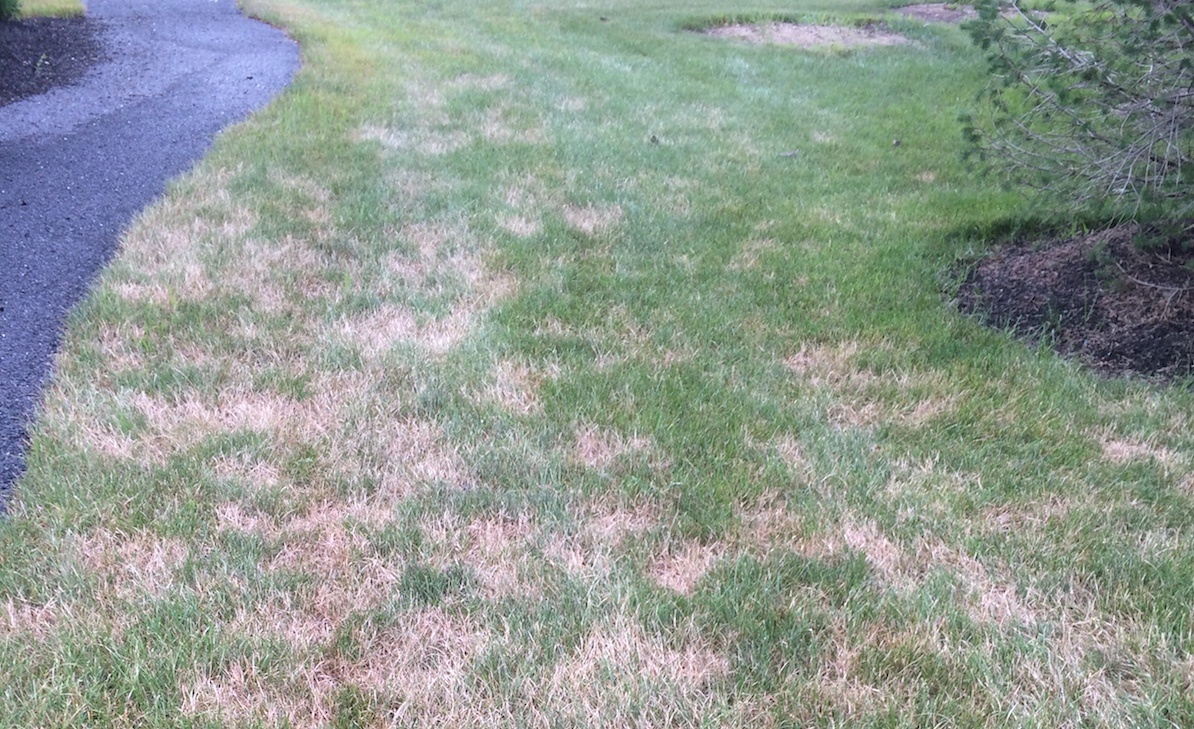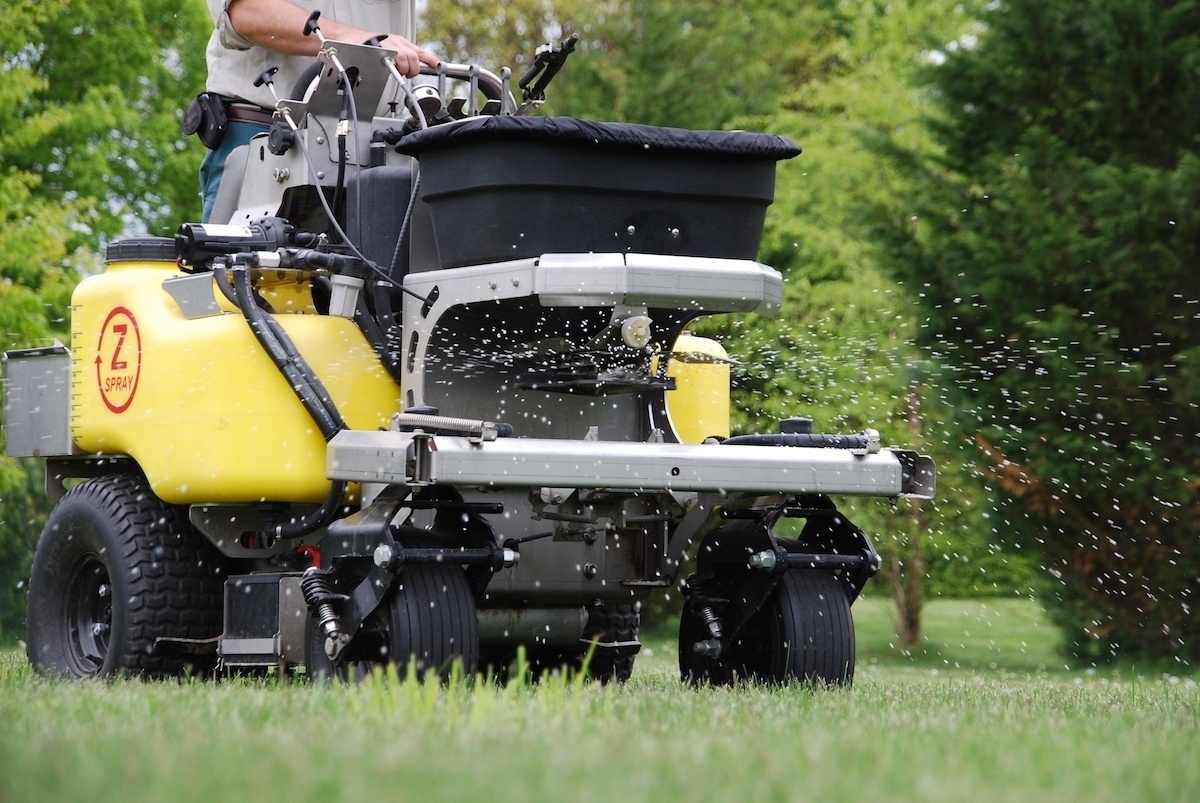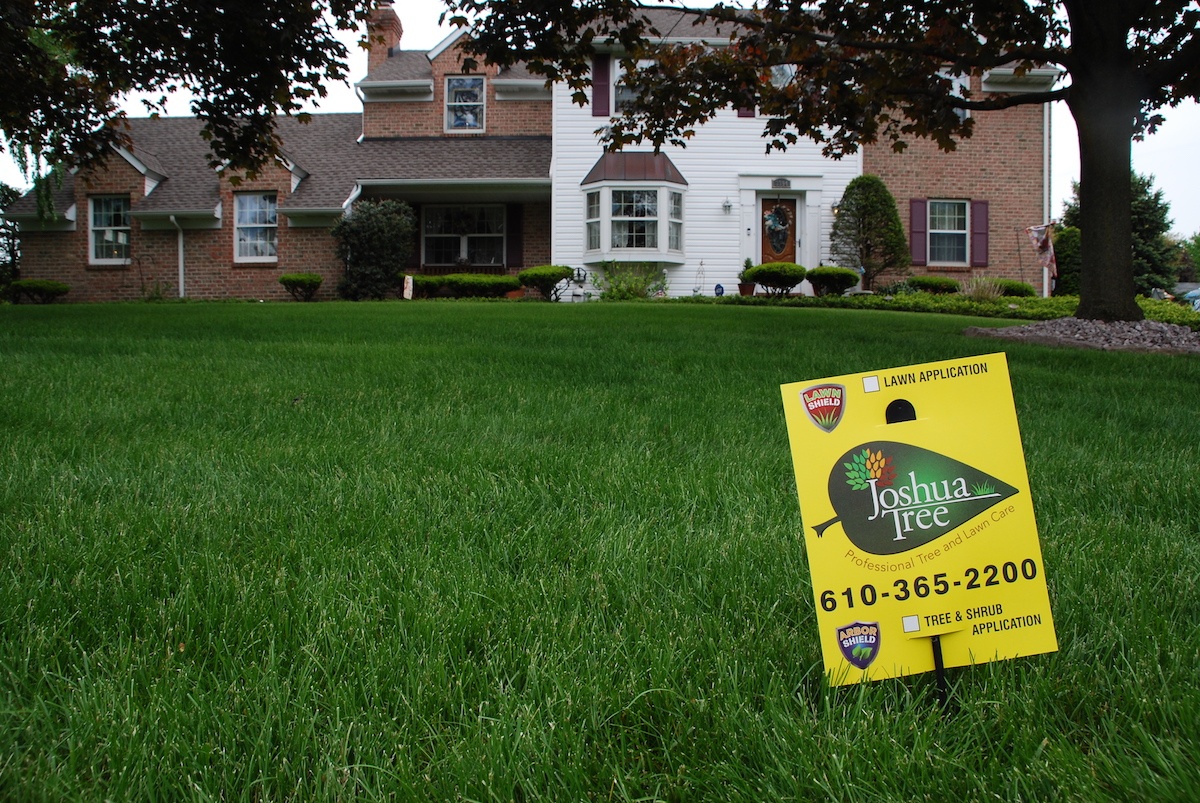If a dark green lawn is your goal, as it is for most homeowners, then you may be feeling frustrated if it’s turning light green or even yellow. You may even feel as though you’ve tried various remedies and it’s still not looking its best.
If you find yourself wondering “Why is my lawn not green?” then we want to help.
We’ve rounded up a variety of potential causes (and associated tips) for you to consider at your home.
Why is My Lawn Not Dark Green?
While this may seem like a relatively simple question, the answer can be complex. That’s because there are a number of different reasons your lawn isn't as green as you like. Sometimes, you may even have more than one problem occurring at once.
Though a diagnosis of your yellowing lawn may be more difficult than you realize, let’s get you started on the path to answers by looking at 7 of the most common reasons grass isn't green.
1. Drought Stress or Lack of Water
Your grass needs water to thrive. When your lawn isn’t receiving enough water, it can start to wilt and ultimately turn pale green or yellow.
PRO TIP: It’s critical that you get on a proper lawn watering schedule. It’s common for people to underestimate just how much water their lawn is receiving from Mother Nature.
A brief thunderstorm may seem like it delivers a lot of rain, but it doesn’t soak down very far to your turf’s roots, where it’s truly needed. On top of that, people get busy and forget to water their lawn. But your lawn needs approximately 1 to 2 inches of water per week to thrive and remain a healthy green.
2. Turf Disease
There are a number of different lawn diseases that can impact the color of your lawn. Fungal diseases, in particular, are known to result in yellow-colored grass that can eventually even turn brown.

PRO TIP: If you suspect that turf disease may be the culprit of your lawn problems, it’s important to talk to a professional who can diagnose the specific disease and incorporate professional-grade fungicides to correct the problem.
3. Early Stages of Grub, Chinch Bug, or Sod Webworm Damage
In the early stages of insect damage, your grass can first appear wilted, then yellow, and ultimately brown.
There are different types of lawn pests that can damage your lawn. Chinch bugs suck, sod webworms chew, and grubs feed on the roots. But all 3 can damage your grass and cause a change in color.

PRO TIP: There are preventative treatments for insects that can help you avoid damage in the first place. Of course, there are also ways to address an active insect problem.
The trouble with insect damage is that it can often mimic disease damage (and other problems, as well). That’s why it’s beneficial to have a professional diagnose your lawn problem.
4. Improper Mowing
A lot of homeowners who ask “why is my grass not green?” are surprised to learn that their mowing habits can have an impact on lawn color. In general, mowing puts a strain on the overall health of your turf.
When you mow your lawn with dull blades, it can put even more stress on your lawn. In addition, mowing too short can also cause your lawn to become yellow.
The darkest green portion of your grass is the part that’s at the top, where it is exposed to the sun and able to produce chlorophyll. When you cut your lawn excessively short, you’re cutting off all of the darkest parts of it.
PRO TIP: Be sure to mow with sharp mower blades, using well-maintained equipment. You should also mow to remove only one-third of a blade at a time. This may mean mowing as often as two times per week. Keep in mind that the ideal mowing height is approximately 3.5 inches.
5. Nutrient Deficiency
Nitrogen deficiency can also be a common cause of pale green or yellowish grass. If you feel like you’re asking why is my lawn not green yet, it’s possible that you haven’t given the fertilizer a chance to work.

PRO TIP: Applying the right amount of fertilizer at the right times of year is key to a healthy green lawn. It’s possible you may not be fertilizing enough throughout the year.
Most professional programs provide fertilizer between 4 and 6 times per year, at the ideal times for application. Having this service handled professionally will help ensure that it’s performed right.
6. Soil Problems
Grass color concerns can also be related to the soil. Compacted soil, which makes it difficult for your grassroots to receive the water they need to thrive, can definitely cause your lawn to start to yellow. Similarly, your soil pH being too low, as is common in Allentown, Bethlehem, and Easton, PA, can also be a problem.
PRO TIP: If soil compaction is a major issue with your lawn, then you might want to consider a lawn aeration service. Aeration helps to break up compacted soil and allow more oxygen, water, and nutrients to penetrate the surface.
If it’s a pH problem, then soil testing can help provide the specific answers that you’re looking for. This will also help you know whether your lawn might benefit from a limestone application.
7. Grass Species
Some species of undesirable grasses are naturally pale. If your lawn is turning pale green or yellow, it could be a sign of an infestation of unwanted grassy weeds.
PRO TIP: Aeration followed by an overseeding service can help to fill in bare patches and encourage desirable turf to grow healthy and strong. While getting rid of weeds is no easy feat, a lawn care program that’s focused on a healthy lawn will help naturally crowd out undesirable weed growth.
The Importance of a Professional Diagnosis
While these are some of the most common answers to the question, “Why is my lawn not dark green?”, this is not a complete list.
Plus, it’s important to recognize that not only do the symptoms of these problems mimic one another, but you may have more than one problem occurring at once.

That’s why proper diagnosis is so critical. Without the proper diagnosis of the problem, you won’t be able to begin an effective solution. Plus, you could make the problem worse.
For instance, if you think your lawn is experiencing drought stress and you start watering a lot more, but it turns out it was actually a fungus, you could make the problem significantly worse. Fungal diseases thrive and spread in wet conditions.
Trust Your Green Lawn to Joshua Tree Experts
If you’re concerned about your lawn’s color, the best course of action is to call in a professional. After a thorough inspection, they can diagnose your problem and get you on the right path toward fixing it.
At Joshua Tree Experts, we have helped many homeowners with these same frustrations. Whether it was a do-it-yourselfer, someone who was working with another lawn care company, or even someone who hadn’t taken any steps at all, we’ve answered lots of questions about why is my lawn not green?
If you find yourself asking the same thing, then we want to be available to help. After all, you ought to be able to get answers to your questions so that you can get your lawn back on track to looking its best.
With the right care for your lawn, you’ll gain valuable peace of mind. If you’re interested in having your lawn inspected and its health assured, contact us for a free quote or give us a call at 833-JTE-TREE.




